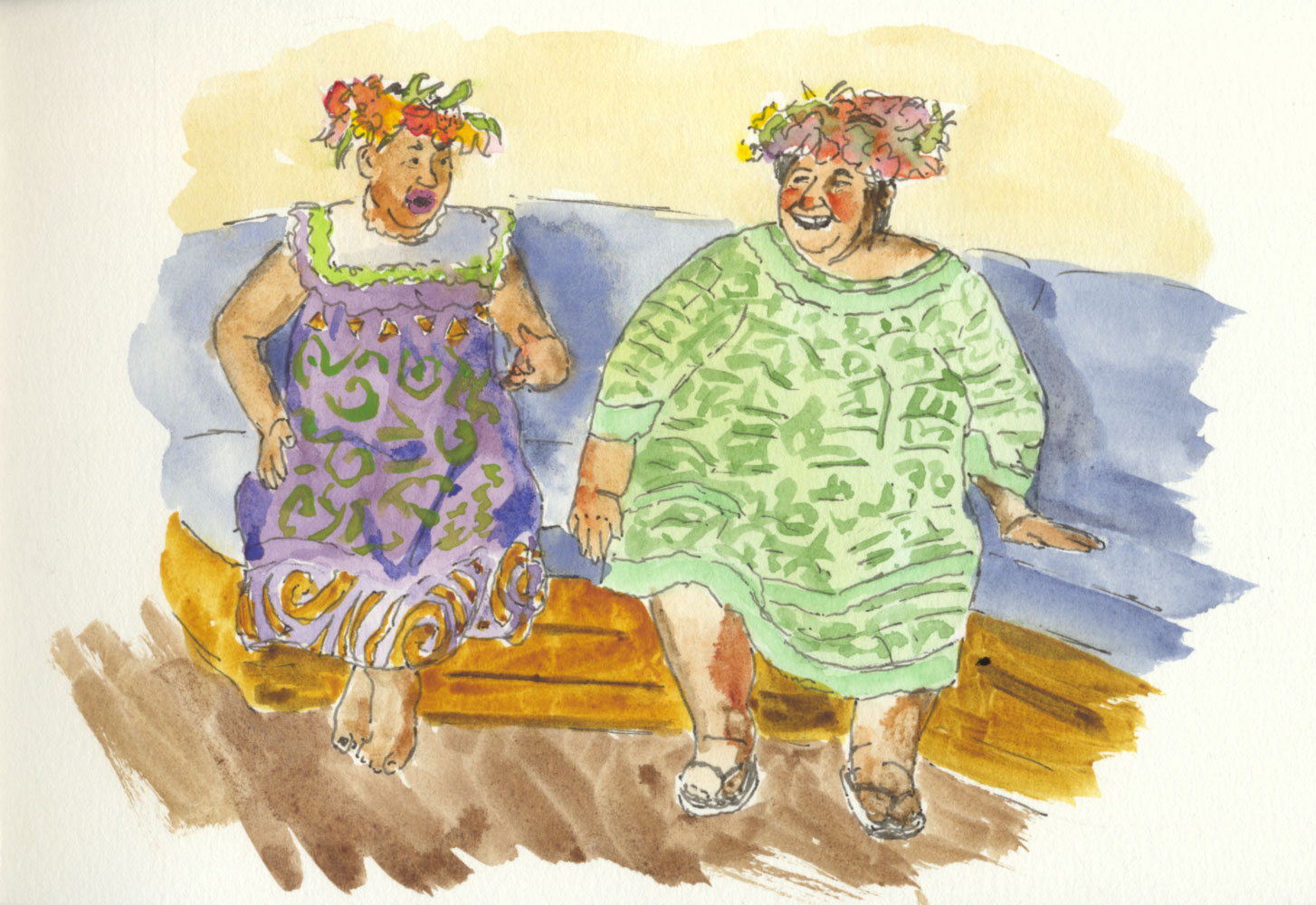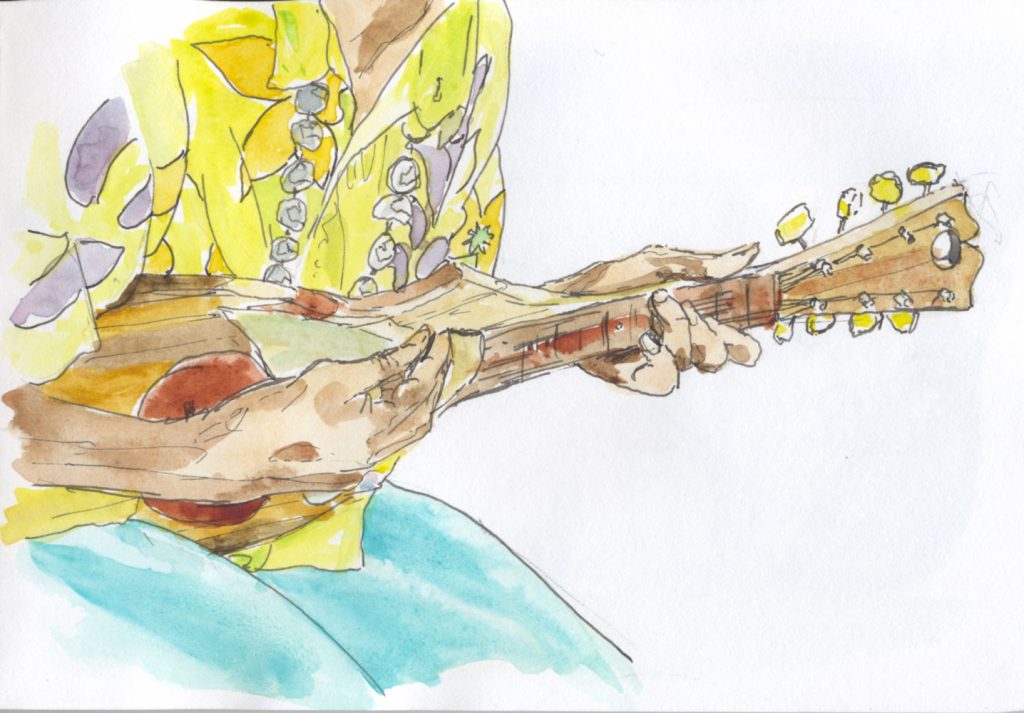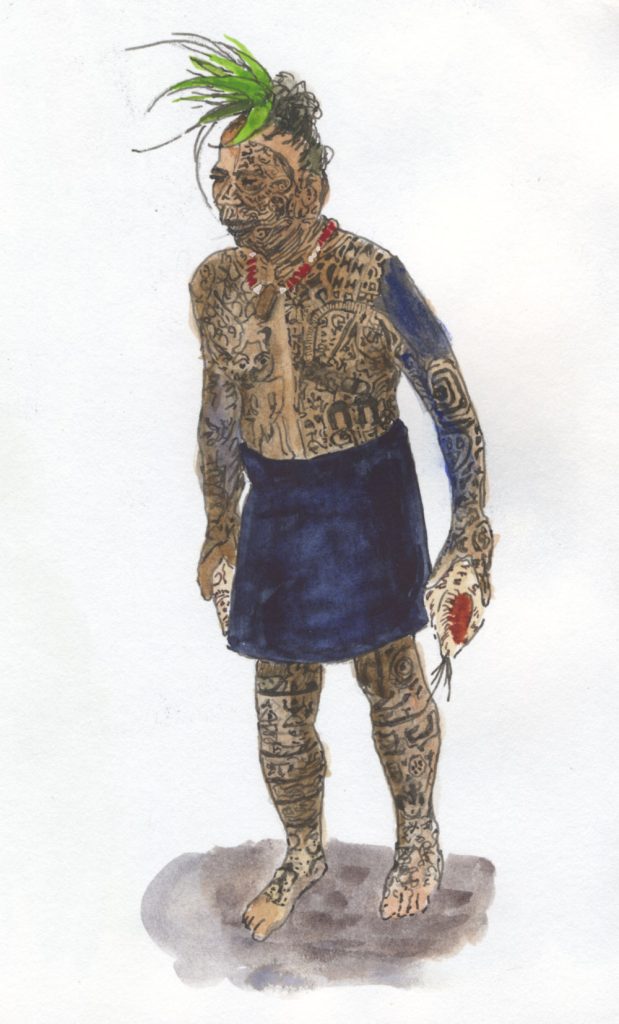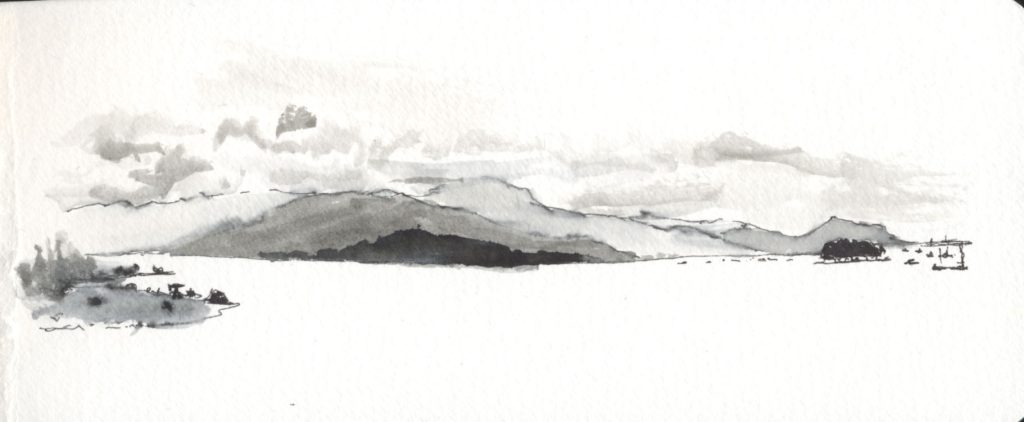May 11, Raiatea Island
The boat was docked at Raiatea’s main town, Uturoa, and its water sports platform was not deployed. We went into the town, Uturoa. Unlike most of the other places we visited, large cruise ships could dock here. And this dock was definitely geared for tourists. There was a large, Polynesian-style longhouse in a grassy lawn, surrounded by smaller grass-hut-looking buildings where souvenirs were being sold. This was all fairly new, as the centerpiece for that central building, a bigger-than-life statue of a shaman-like figure was being set up with his arms outstretched, welcoming the travelers. (No one could identify this hero; the statue’s dedication was being held the next day.)
Eleven different excursions were offered today, but none of them really appealed to us, so we simply walked into town. The main street was about three blocks long, lined with shops, mostly markets for the locals, one large, attractive tourist center, and a market with local produce, patisserie (remember, it’s French Polynesia), and handicrafts. In other words, a fairly straightforward Main Street kind of town, with a touristy bent. I got some interesting photos—maybe fodder for pictures at another time.
Raiatea is the first of the islands in this group to become inhabited. The area was populated from there. As such it is recognized as the cultural center for the country, and it was here that we were given demonstrations of Polynesian culture. A local group came aboard in the afternoon to play some traditional music, sing songs, and demonstrate dances. Two of the women sat down on the deck and wove beautiful corsages for the ladies. One of the younger women demonstrated the many ways one could wear a pareo, as a skirt, a top, and even as a man’s loincloth, or maru.

I asked one of the musicians about the curious triangular-bodied string instrument he was playing. He looked at me like I was nuts: “A ukulele!”

This is no Tiny Tim ukulele. Not only is its body shaped more like an electric guitar than any acoustical guitar (even a balalaika), it has double strings.

Later that day a man named Tihoi gave a talk in the main lounge. He was a proponent of reviving Polynesian culture, of practices that were wiped away by contact with the West, such as tattoos (which he was covered with, head to toe), traditional sailing and fishing skills, family structures, and more of what it meant to be Polynesian. He proposed reinstating tattoos in the Maori fashion, as a way of demonstrating a person’s family connection and position in society.
A series of what cruise lines call “enrichment lectures” was given some evenings during the cruise in addition to the customary “port talk” they gave each night for the next day’s destination. These were given by Joseph Novitski, an American author who wrote a history of the Windstar line. A major portion of his talks dealt with how the Polynesians migrated to these islands. He agreed with Tihoi on one topic in particular, wayfinding, and described its importance in making this migration possible. He was careful to clarify the difference between it and navigation, which relies on instruments like the compass, chronometer, sextant, and charts. Novitski pointed out that Captain Cook’s exploration of the Pacific would not have been successful if he had not employed a native wayfinder, whose amazing skills are documented in Cook’s logs. To Tihoi’s point of preserving Polynesia’s traditions Novitski showed photos of students in Tahiti being taught traditional Polynesian sailing skills.

Uturoa may be a fairly ordinary looking town, but the view from its dock is spectacular.
